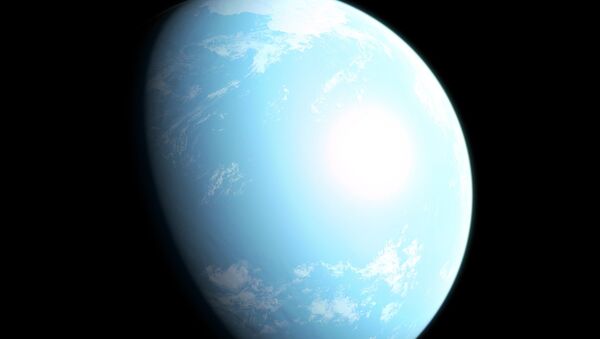A potentially habitable “super-Earth” – the planet codenamed GJ 357 d that is estimated to be about six times heavier than our planet and twice its size, has been detected just 31 light-years away from our Solar System, astronomers said Wednesday in a press-release, adding assuringly that the newly found exoplanet may support life as we know it. The study was published on 31 July in the journal Astronomy and Astrophysics.
Astronomers confirming a candidate planet found by @NASA_TESS made an exciting discovery when they looked at ground-based observations of its host star — there were two more planets hiding in the data! Meet the planets of the GJ 357 system: https://t.co/fQaGyGLQhI pic.twitter.com/dXtHXt5aOR
— NASA Blueshift (@NASAblueshift) July 31, 2019
The international group of astronomers that discovered the astronomical body with the help of NASA’s Transiting Exoplanet Survey Satellite (TESS) earlier this year in the constellation Hydra, went on to specify the exact parameters that provide could “provide Earth-like conditions” on it – the fact that would potentially make a perfect destination for space travellers:
“With a thick atmosphere, the planet GJ 357 d could maintain liquid water on its surface like Earth, and we could pick out signs of life with telescopes that will soon be online”, Lisa Kaltenegger, the director of the Carl Sagan Institute at Cornell and associate professor in astronomy, said in a statement, continuing further:
“If GJ 357 d were to show signs of life, it would be at the top of everyone’s travel list – and we could answer a 1,000-year-old question on whether we are alone in the cosmos”.
.@NASA_TESS observations led to the discovery of three planets around a star known as GJ 357, which is located just 31 light-years away. The outermost planet, GJ 357 d, orbits within the star’s so-called habitable zone. Learn more here: https://t.co/iTxgSASv7l pic.twitter.com/29s3RJTV8h
— NASA_TESS (@NASA_TESS) July 31, 2019
According to Jack Madden, doctoral candidate at Cornell and co-author of the study, mere knowledge of liquid water possibly existing on the surface of the planet, “motivates scientists to find ways of detecting signs of life”. "We built the first models of what this new world could be like”, he pointed out.
The potentially habitable planet due to loads of water assumed to be stored in its depths, and two neighbouring worlds were discovered making the rounds around a dwarf star, which is around a third the size and mass of our own Sun and 40% cooler.
TESS paid attention to the star dimming every 3.9 days - a fact that may point to the exoplanet possibly transiting its face. GJ 357 d was found to be located in its star’s “habitable zone” meaning it’s not too hot or too cold, while the two other planets, more massive in size, are believed to likely have a surface temperature that is not compatible with life – from 127 degrees Celsius in the case of GJ 357 c to 254 C (on the surface of GJ 357 b.)



